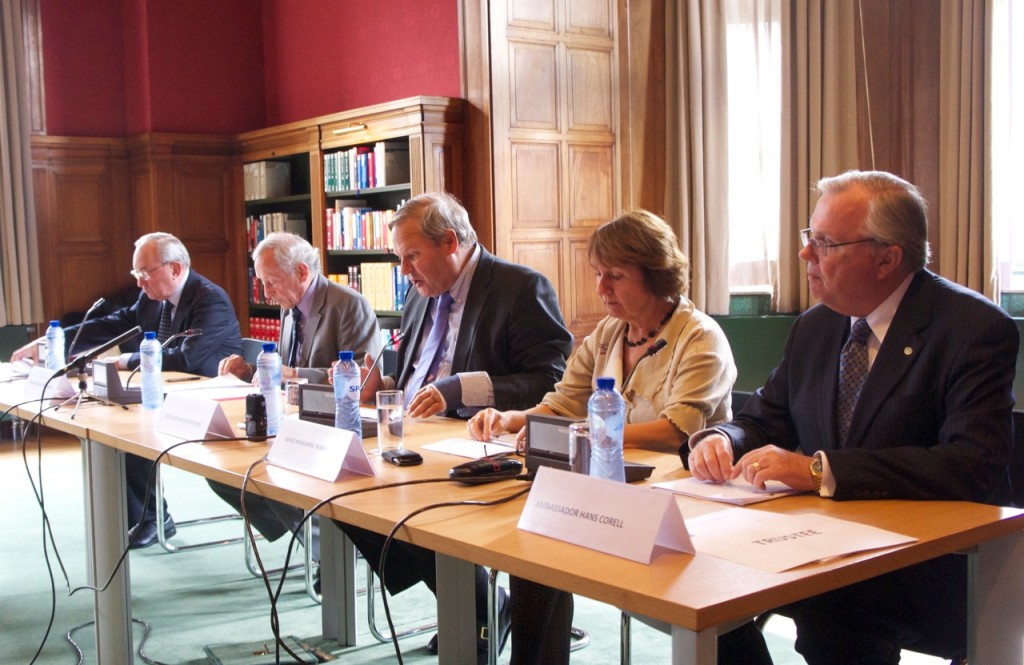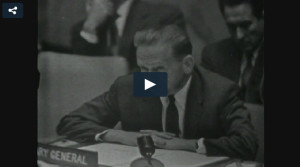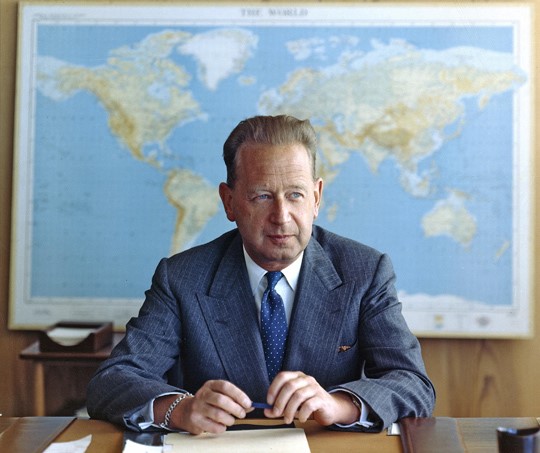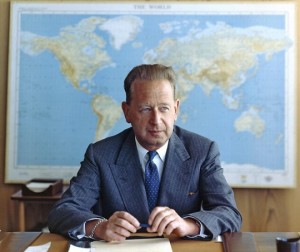By Henning Melber and David Wardrop
Once upon a time there was a Secretary General of the United Nations. Along with 15 others, he died in a plane crash. It was the night of 17-18 September 1961, when the Albertina, a DC-6, was approaching the airport of Ndola in the British colony of Northern Rhodesia (now Zambia). The UN Secretary General was Dag Hammarskjöld. He was on his way to meet the leader of the Katanga secession, Moïse Tshombe, to find a peaceful solution to the conflict in the mineral-rich Congolese province, of huge geostrategic relevance.
Investigations immediately after the tragedy reached differing conclusions. A UN Commission delivered an open verdict and was unable to rule out sabotage, while a Rhodesian inquiry blamed the crash on pilot error. In 1962 the UN General Assembly adopted a Resolution. This stipulated that if new evidence were to be presented, the UN investigation should be re-opened. Speculations on the cause of the crash thrived for decades, but without leading to a new inquiry.
This changed 50 years later. Dr Susan Williams, a British historian and Senior Fellow at the Institute of Commonwealth Studies, a member of the School of Advanced Study, published Who Killed Hammarskjöld? (Hurst 2011), which evaluated evidence from archives and from witnesses, pointing to numerous irregularities in the investigations. It also presented disturbing new facts, as well as important concerns raised by others over the years. Her book stopped short of an answer, but challenged the dominant explanation of an accident and argued the case for a new investigation. This was backed by Dag’s nephew Knut Hammarskjöld, who returned his uncle’s body from Ndola to Uppsala and had closely inspected the crash site.
British peer Lord Lea of Crondall, read the book and resolved to set up a new inquiry. Interest was growing. Professor K. G. Hammar, former Archbishop of the Church of Sweden, went to Zambia with Hans Kristian Simensen, a Norwegian researcher, and called on Sweden to get the case reopened. They joined an Enabling Committee chaired by Lord Lea, as did Chief Emeka Anyaoku of Nigeria, the former Commonwealth Secretary General; Lord Marks of Henley-on-Thames, UK; Professor Henning Melber of the Dag Hammarskjöld Foundation in Sweden; Professor Naison Ngoma at the Copperbelt University in Zambia; and Dr Williams.

The Hammarskjold Commission deliver their report at the Peace Palace in The Hague, 9 September 2013, chaired by Steven van Hoogstraten, Director of the Carnegie Foundation in The Hague. From left to right: Justice Goldstone, Sir Stephen Sedley, Steven van Hoogstraten, Justice Thomassen, Ambassador Corell. Photograph by Hans Kristian Simensen.
The Enabling Committee established the Hammarskjöld Commission, an independent body of distinguished senior jurists, working pro bono: Sir Stephen Sedley of the UK (Chair), a former Lord Justice of Appeal; Ambassador Hans Corell of Sweden, former UN Under-Secretary-General for Legal Affairs; Justice Richard Goldstone of South Africa, a former judge of the Constitutional Court of South Africa and the first Chief Prosecutor of the UN International Criminal Tribunals for Yugoslavia and Rwanda; and Justice Wilhelmina Thomassen of The Netherlands, a former judge of the European Court of Human Rights in Strasbourg and of the Supreme Court of The Netherlands. The Secretary to the Commission was Beatrice Randall.
The Commission’s remit was to determine whether there was a case for re-opening the UN Inquiry in the light of the 1962 Resolution. Generous support with expertise, finance and logistics was received from individuals and organisations from several countries. In September 2013 the Commission presented its report at the Peace Palace in The Hague. It asked, ‘does significant new evidence about Dag Hammarskjöld’s death exist?’ and gave a clear answer – ‘Undoubtedly it does’. ‘There is persuasive evidence,’ it stated, ‘that the aircraft was subjected to some form of attack or threat as it circled to land at Ndola.’ It recommended that the UN conduct a further investigation. The report was presented to the UN Secretary-General.

UN Video: The United Nations today moved closer to opening a new investigation into the death of former Secretary-General, Dag Hammarskjöld. UNIFEED UNTV – 23 December 2014 (opens in a new window)
Ban Ki-moon’s response was affirmative. ‘The unparalleled service and sacrifice of Dag Hammarskjöld and his legacy within the United Nations and beyond,’ he asserted in March 2014, ‘compels us to seek the whole truth of the circumstances leading to his tragic death and that of the members of the party accompanying him.’ He asked the General Assembly to select one of several suggested options, to pursue the matter further. He also called on Member States ‘to declassify any relevant records in their possession’.
Concerted efforts were now required to mobilise UN Member States to turn the recommendation of the UN Secretary General into a draft Resolution, for adoption by the General Assembly. This led to a new international coalition of individuals and groups, coordinated by the Westminster Branch of the United Nations Association, which resulted in informal lobbying and public appeals in several countries. Investigative journalists at Dagens Nyheter, the Guardian, New African the Wall Street Journal and other publications worldwide, as well as social media, joined the UNA to shine a light on the issue.
A change of government in September 2014 in Sweden was a decisive moment. The newly-elected government reversed the previous government’s position, which had rejected any need for further investigation. Given that Hammarskjöld and several other victims of the crash were Swedish citizens, this had a decisive impact. It also served as a motivating signal to other UN Member States, notably Nordic and African, and especially Zambia. Finally, the lobbying bore fruit. On 29 December 2014, the UN General Assembly adopted a Resolution submitted by Sweden, authorising the Secretary General to appoint an independent Panel of Experts to examine all the evidence and report to him. Fifty-five nations joined Sweden to co-sponsor the Resolution, which was adopted by the consensus of all 193 Member States.
What sounds like a fairy tale turned into reality: starting with the book of a senior historian, a few individuals followed up with an initiative, which – against all the odds – finally re-opened a case that had been closed for more than 50 years. This may bring comfort to those – including family members – who are still suffering from the unproven assumption that pilot error caused one of the biggest tragedies in the UN’s history and the violent death of its second Secretary General. The truth could be very different. Once again, the pen may turn out to be mightier than the sword, by speaking truth to power and calling for justice.
Henning Melber is Director Emeritus at the Dag Hammarskjöld Foundation, Sweden, while David Wardrop is Chair of the United Nations Association, Westminster Branch, UK. Check out the website for more details about the Hammarskjöld Commission.


